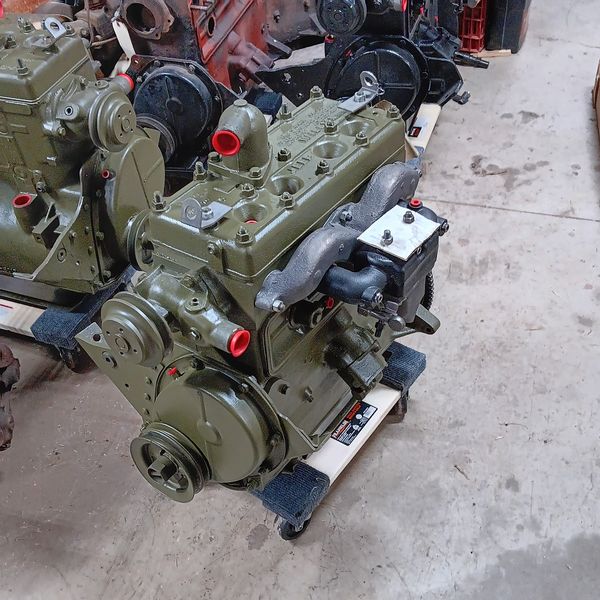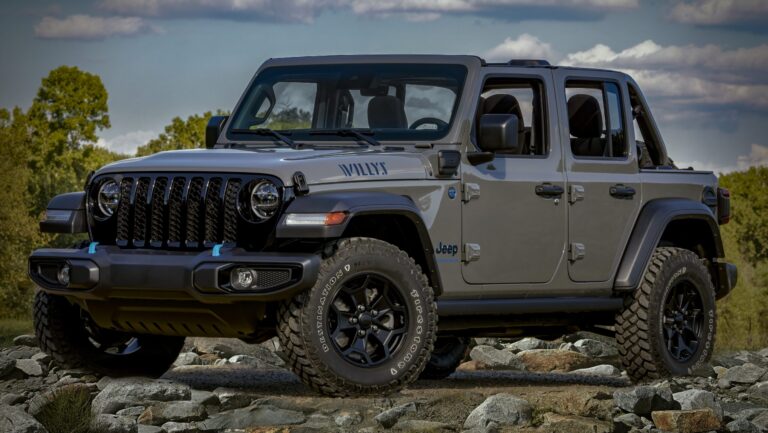1978 Jeep Renegade For Sale: Your Guide to Owning an American Icon
1978 Jeep Renegade For Sale: Your Guide to Owning an American Icon jeeps.truckstrend.com
The year 1978 marked a pivotal moment for the Jeep CJ-7, a vehicle that had already cemented its place in automotive history as the quintessential American off-roader. Among its various trims, the Renegade package stood out, offering an enhanced aesthetic and a more rugged appeal that perfectly captured the adventurous spirit of the late 70s. For enthusiasts and collectors alike, finding a "1978 Jeep Renegade For Sale" isn’t merely about acquiring a used vehicle; it’s about investing in a piece of automotive heritage, a tangible link to an era of unbridled exploration and iconic design. This comprehensive guide will navigate you through everything you need to know about purchasing, owning, and appreciating a 1978 Jeep Renegade, ensuring you’re well-equipped to make an informed decision on this timeless classic.
The Allure of the 1978 Jeep Renegade: A Timeless Classic
1978 Jeep Renegade For Sale: Your Guide to Owning an American Icon
The Jeep CJ-7, produced from 1976 to 1986, represented an evolution of the beloved CJ-5, offering a slightly longer wheelbase that improved ride comfort and stability without sacrificing its legendary off-road prowess. Within the CJ-7 lineup, the Renegade trim was the epitome of style and capability. For 1978, the Renegade package typically included bold graphics, unique alloy wheels, a sport steering wheel, bucket seats, and a host of other cosmetic and functional upgrades that set it apart from standard CJ-7s.
What makes the 1978 model year particularly special? It was a time when the CJ-7 had matured into a reliable and robust platform, before the significant changes that would come in the early 1980s. The 1978 Renegade often came equipped with AMC’s robust 258 cubic inch (4.2L) inline-six engine, known for its torque and durability, or the more powerful 304 cubic inch (5.0L) V8, offering a distinct rumble and extra grunt. These mechanical foundations, combined with the rugged Dana axles and various manual or automatic transmission options, made the 1978 Renegade a formidable machine both on and off the pavement. Its simple, utilitarian design, coupled with its open-air driving experience, continues to captivate those who long for a more visceral connection to the road and the trail.
What to Look For: Essential Inspection Points When Buying a 1978 Jeep Renegade
Purchasing a classic vehicle like a 1978 Jeep Renegade requires a meticulous approach. These Jeeps are nearly half a century old, and time, weather, and previous owners can take a significant toll. Here’s a detailed checklist of critical areas to inspect:
- Rust (The Silent Killer): This is arguably the most crucial inspection point. Check the frame thoroughly, especially around the body mounts, spring hangers, and steering box area. Common body rust spots include the floorboards, rocker panels, front fenders, tailgate, and the area around the windshield frame. Surface rust is manageable, but extensive perforation indicates a much larger, more expensive problem.
- Drivetrain Integrity:
- Engine: Listen for unusual noises (knocks, ticks, excessive smoke). Check for oil leaks around the valve covers, oil pan, and rear main seal. Ensure it starts easily and idles smoothly. The 258 I6 is generally bulletproof, but the 304 V8 can suffer from oiling issues if not maintained.
- Transmission: Whether it’s the T-150 (3-speed manual), T-18 (4-speed manual), or the venerable TH400 (automatic), check for smooth shifts, no grinding, and proper engagement of all gears. Look for fluid leaks.
- Transfer Case: The Dana 20 or Quadra-Trac (full-time 4WD) transfer cases should engage smoothly into 2WD, 4WD High, and 4WD Low without excessive clunking or grinding. Check for leaks around the seals.
- Axles: The Dana 30 front and AMC 20 rear axles are standard. Inspect for leaks at the differential covers and axle seals. The AMC 20 rear axle is notorious for weak two-piece axle shafts; many owners upgrade to one-piece shafts. Check U-joints for play.

- Suspension and Steering: Examine the leaf springs for sagging or broken leaves. Check the shackles and bushings for wear. Inspect the steering linkage for loose tie rods, drag links, and excessive play in the steering box. A wobbly steering wheel at speed is a common CJ issue, but excessive play suggests worn components.
- Electrical System: Old wiring can be problematic. Test all lights (headlights, taillights, turn signals, brake lights), gauges, wipers, and the heater/blower motor. Check for any aftermarket wiring that looks poorly done.
- Interior and Top: Assess the condition of the seats, dashboard, and floor. Original Renegade seats are highly desirable but often worn. Check the integrity of the roll bar. If it comes with a soft top, inspect for tears, cloudy windows, and proper fitment. Hardtops are also available and add value.
- Documentation: Service records, previous ownership history, and any original build sheets can add significant value and provide insight into the vehicle’s past.


Understanding Valuation: How to Price a 1978 Jeep Renegade
The price of a 1978 Jeep Renegade can vary wildly depending on its condition, originality, and specific features. It’s crucial to understand the factors that influence its market value:
- Condition: This is the primary determinant. A fully restored, show-quality Renegade will command a premium price, while a non-running project car will be significantly less.
- Originality vs. Modification: Highly original, unmolested examples often fetch higher prices from collectors. However, well-executed modifications (e.g., engine swaps, suspension upgrades) can appeal to off-road enthusiasts, potentially increasing value within that niche.
- Engine and Transmission: V8-equipped Renegades often command more than inline-six versions. Manual transmissions can also be more desirable for purists and off-roaders.
- Optional Equipment: Features like a factory hardtop, winch, power steering, or air conditioning (rare but possible) can add value.
- Rust-Free Body/Frame: A solid, rust-free foundation is paramount and significantly increases value.
- Market Trends and Location: Classic car markets fluctuate, and prices can vary by region.
To accurately gauge a price, consult resources like Hagerty Valuation Tools, NADA Classic Car Values, and recent auction results. Browse online marketplaces (eBay Motors, Bring a Trailer, ClassicCars.com, local classifieds) to see what similar models are listed for and what they are actually selling for. Be prepared to pay a fair price for a well-maintained or restored example, as cheap Jeeps often hide expensive problems.
The Ownership Experience: Life with a Classic Jeep CJ-7
Owning a 1978 Jeep Renegade is more than just transportation; it’s a lifestyle.
-
Benefits:
- Unique Driving Experience: Nothing else feels quite like a vintage CJ. The open-air freedom, the direct connection to the road, and the classic rumble are unparalleled.
- Community: The Jeep community is vast and welcoming. You’ll find countless resources, clubs, and events dedicated to classic Jeeps.
- Off-Road Capability: Despite its age, a well-maintained 1978 Renegade remains a highly capable off-road vehicle, ready for adventure.
- Relatively Simple to Work On: With fewer complex electronics than modern vehicles, many repairs and maintenance tasks can be done by a competent DIY mechanic.
- Investment Potential: Well-preserved or expertly restored examples tend to hold or even appreciate in value over time.
-
Challenges:
- Fuel Economy: Don’t expect hybrid-like MPG. These vehicles were designed for ruggedness, not efficiency.
- Comfort and Safety: Compared to modern SUVs, the ride is rougher, and safety features are minimal.
- Maintenance: While simple, they are old vehicles and will require ongoing maintenance and occasional repairs. Rust prevention is an ongoing battle.
- Parts Availability: While many parts are available (both OEM-style and aftermarket), some specific trim pieces or original components can be difficult to source.
-
Practical Advice:
- Routine Maintenance is Key: Stick to a strict maintenance schedule for fluids, filters, and lubrication.
- Address Issues Promptly: Small problems can quickly escalate if ignored.
- Rust Prevention: Keep it clean, especially after off-roading or winter driving. Consider undercoating or rust inhibitors.
- Find a Good Mechanic: If you’re not a DIYer, find a mechanic who specializes in vintage 4x4s or classic American vehicles.
- Join Forums and Clubs: Online forums (e.g., JeepForum.com, CJ-7.com) and local clubs are invaluable resources for advice, parts, and camaraderie.
Restoration vs. Preservation: Your Path to 1978 Jeep Renegade Ownership
When considering a 1978 Jeep Renegade for sale, you’ll likely encounter vehicles in various states of repair, leading to a decision between restoration, preservation, or modification.
- Full Restoration: This typically involves a complete frame-off teardown, addressing all rust, rebuilding or replacing all mechanical components, and a professional paint job. This path is the most expensive and time-consuming but results in a concourse-quality vehicle that can command top dollar. It’s ideal if you aim for a show vehicle or a perfect example of originality.
- Preservation (Driver Quality): This approach focuses on maintaining the vehicle’s originality while ensuring it’s a reliable and enjoyable driver. It might involve addressing minor rust, performing necessary mechanical repairs, and detailing without a full repaint. This is often the most practical choice for those who want to enjoy their classic Jeep regularly without the immense cost of a full restoration.
- Modification/Upgrading: Many CJ owners choose to modify their Jeeps for enhanced off-road performance or modern convenience. This can include engine swaps (e.g., LS conversions), suspension lifts, larger tires, aftermarket axles, and interior upgrades. While this can make the Jeep more capable or comfortable, it often detracts from its originality and can impact its value to purist collectors. It’s essential to consider your goals before embarking on significant modifications.
Concluding Summary: The Enduring Appeal of the 1978 Jeep Renegade
The 1978 Jeep Renegade is more than just a classic SUV; it’s a symbol of freedom, adventure, and rugged individualism. Its iconic styling, coupled with its proven off-road capabilities, ensures its timeless appeal. Whether you’re a seasoned collector, an off-road enthusiast, or simply someone who appreciates the raw charm of vintage machinery, a 1978 Renegade offers a truly unique ownership experience.
While acquiring one requires careful inspection and a clear understanding of its potential needs, the rewards are immense. The satisfaction of driving a piece of American history, the camaraderie of the Jeep community, and the sheer joy of open-air motoring make the journey worthwhile. Owning a 1978 Jeep Renegade is not just about having a vehicle; it’s about embracing a legacy and forging your own adventures, one mile at a time.
1978 Jeep Renegade For Sale: Estimated Price Guide
The prices below are approximate and can vary significantly based on location, specific features (engine, transmission, hardtop/soft top, winch, etc.), and the urgency of the sale. Always conduct thorough research and consider a pre-purchase inspection.
| Condition Category | Description




